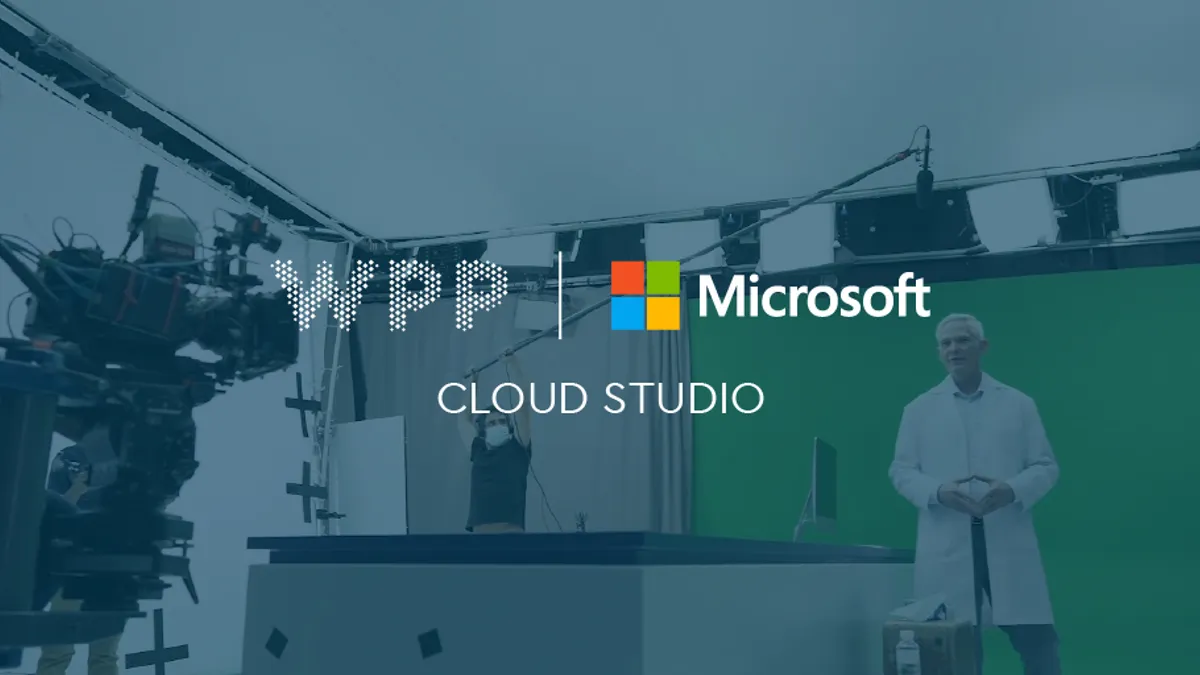Dive Brief:
- WPP tapped tech partner Microsoft to develop a cloud-based virtual production platform that will allow agencies to remotely produce campaigns for clients around the world, according to an announcement. The ad holding giant claims that Cloud Studio is the industry's first bespoke platform for virtual production.
- The offering supported by Azure will be rolled out to a group of 5,000 employees over the next three years, with a significant portion coming from the Hogarth creative production shop. In the long term, Cloud Studio could be available to up to 25,000 users, roughly one-quarter of WPP's current workforce, the holding company said.
- Cloud Studio intends to foster more efficiency and collaboration, providing ease of access to content for employees in different markets and timezones. WPP is addressing demands driven by the pandemic, which has sped up production times and forced employees to adjust to remote or hybrid work environments.
Dive Insight:
WPP signals that hybrid work will be an enduring part of its strategy even as parts of the marketing world start to reopen with the facilitation of effective vaccines against the coronavirus. Cloud Studio is a bid to put the agency on the leading edge of remote collaboration, a model employees were forced to adapt to with the onset of the pandemic last year and which has led to increased feelings of alienation and burnout within an industry already infamous for late hours. More flexible technology could alleviate some of those pressures, or amplify them if mastery requires a steep learning curve.
Using Azure's artificial intelligence-powered technology, Cloud Studio indexes WPP metadata and makes it available in a central location that's accessible anywhere. The solution falls in line with WPP's sustainability goals in lessening a reliance on traditional production studios and minimizing energy consumption, the company said. Cloud Studio can also scale cloud storage needs up or down based on how close a project is to completion, according to the announcement. Additionally, its content and digital asset discovery capabilities cut down on waste, allowing employees to repurpose unused material from previous shoots.
WPP in April pledged to reach net-zero carbon emissions in its operations by 2025 and across its entire supply chain by 2030. Beyond the tech angle, the Cloud Studio concept speaks to how agencies like WPP are trying to better localize creative efforts as brands turn to new markets for growth.
WPP has increasingly leaned on its Microsoft partnership amid the jump to remote work. The company has relied on Microsoft's digital communications app Teams to keep its 100,000-person workforce connected since the onset of COVID-19. The ad holding group also uses Azure technology in a solution that accounts for accessibility and inclusivity features in clients' work.
Following a rough period that saw brands cut back on spending, WPP has notched some recent gains, reporting that like-for-like organic growth — an important measure of health for agencies — climbed 3.1% year-on-year to $3.24 billion in the first quarter. The group is broadly ramping up a transformation that prioritizes services in areas like e-commerce and data. Late last month, it unveiled a new consultancy called Choreograph that combines data specialist units from GroupM and Wunderman Thompson to assist clients with their first-party data strategies.














